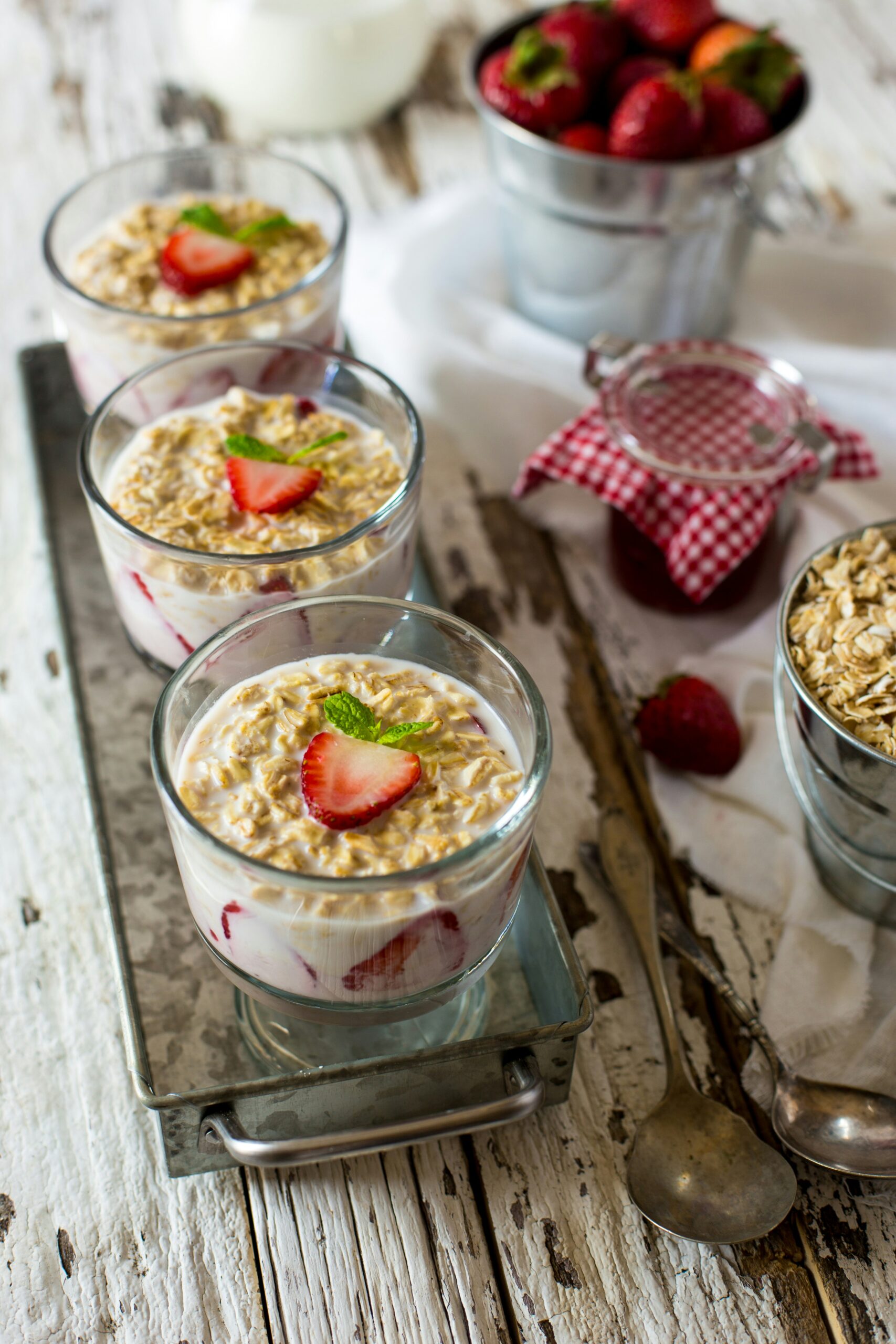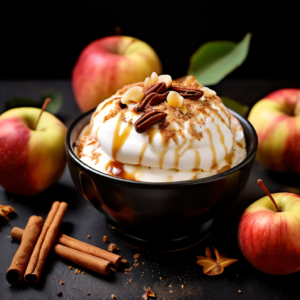Introduction
As the New Year approaches, it’s the perfect time to embrace healthy eating habits and nourish your body with delicious and nutritious meals. In this article, we’ll explore a variety of healthy and flavorful recipes to kickstart your year on the right foot.
Embracing Healthy Eating in the New Year
As we welcome the New Year, it’s an ideal time to embrace healthy eating habits that nourish our bodies and support overall well-being. From the importance of starting the year with nutritious meals to the benefits of incorporating healthy ingredients into recipes, let’s explore how to kickstart a year of health and vitality with these essential tips for maintaining a balanced diet and lifestyle.
Importance of Starting the Year with Nutritious Meals
- Setting the Tone: Beginning the year with nutritious meals sets a positive tone for your health and well-being, laying the foundation for sustainable habits that can last throughout the year.
- Boosting Immunity: Nutrient-rich foods provide essential vitamins, minerals, and antioxidants that support a strong immune system, helping to ward off illness and keep you feeling your best during the colder months.
- Enhancing Energy Levels: Balanced meals consisting of whole grains, lean proteins, healthy fats, and plenty of fruits and vegetables provide sustained energy throughout the day, helping you stay focused and productive.
Benefits of Incorporating Healthy Ingredients into Recipes
- Improved Nutrient Intake: By incorporating healthy ingredients such as fruits, vegetables, whole grains, and lean proteins into your recipes, you increase your intake of essential nutrients that support overall health and vitality.
- Enhanced Flavor and Texture: Healthy ingredients add depth, flavor, and texture to dishes, making them delicious and satisfying without the need for excessive amounts of added fats, sugars, or salt.
- Long-Term Health Benefits: Eating a diet rich in healthy ingredients has been linked to a reduced risk of chronic diseases such as heart disease, diabetes, and certain types of cancer, promoting longevity and quality of life.
Tips for Maintaining a Balanced Diet and Lifestyle
- Meal Planning: Plan your meals ahead of time to ensure they’re balanced and nutritious, incorporating a variety of foods from all food groups.
- Portion Control: Practice portion control to prevent overeating and maintain a healthy weight. Use smaller plates and bowls, and be mindful of serving sizes when dishing out your meals.
- Stay Hydrated: Drink plenty of water throughout the day to stay hydrated and support optimal bodily functions. Limit sugary beverages and opt for water, herbal teas, or infused water instead.
- Incorporate Physical Activity: Aim to incorporate regular physical activity into your daily routine, whether it’s through structured exercise, walking, biking, or engaging in recreational activities you enjoy.
- Practice Mindful Eating: Slow down and pay attention to your body’s hunger and fullness cues when eating. Practice mindful eating by savoring each bite, chewing slowly, and being present at meal times.
By embracing healthy eating habits in the New Year, you can nourish your body, boost your energy levels, and support your overall health and well-being. Whether you’re starting the day with a nutritious breakfast, incorporating healthy ingredients into your favorite recipes, or making mindful choices throughout the day, prioritizing healthful eating habits sets the stage for a vibrant and fulfilling year ahead. So take the first step towards a healthier you by embracing nutritious meals, incorporating healthy ingredients, and adopting a balanced diet and lifestyle that supports your health goals and aspirations.
Essential Ingredients for Healthy Cooking
When it comes to healthy cooking, having the right ingredients on hand is key to creating nutritious and delicious meals that support your well-being. From whole grains to lean proteins and fresh produce, here are essential ingredients to keep stocked in your kitchen for healthy cooking endeavors:
Whole Grains
- Quinoa: A versatile and nutrient-rich whole grain, quinoa is packed with protein, fiber, and essential vitamins and minerals. It can be used as a base for salads, stir-fries, or pilafs, providing a satisfying and nutritious addition to any meal.
- Brown Rice: An excellent source of complex carbohydrates, brown rice is high in fiber and provides sustained energy throughout the day. It can be used as a side dish, added to soups or stews, or incorporated into casseroles and grain bowls.
- Oats: Oats are a heart-healthy whole grain that’s rich in soluble fiber, which helps lower cholesterol levels and regulate blood sugar. They can be enjoyed as oatmeal for breakfast, used in baking recipes, or added to smoothies for extra thickness and nutrition.
- Whole Wheat Flour: Unlike refined white flour, whole wheat flour retains the bran and germ of the wheat kernel, making it higher in fiber, vitamins, and minerals. Use it as a healthier alternative in baking recipes for bread, muffins, pancakes, and more.
Lean Proteins
- Chicken Breast: Lean and versatile, chicken breast is a staple protein source that’s low in fat and high in protein. It can be grilled, baked, sautéed, or shredded and added to salads, soups, and sandwiches for a nutritious boost.
- Turkey: Lean turkey meat is a great alternative to beef or pork, offering a lower fat content and plenty of protein. Ground turkey can be used in recipes such as burgers, meatballs, and chili, while turkey breast can be roasted or sliced for sandwiches and wraps.
- Tofu: Tofu is a plant-based protein source that’s rich in calcium, iron, and essential amino acids. It’s incredibly versatile and can be used in a variety of savory and sweet dishes, from stir-fries and curries to smoothies and desserts.
- Legumes: Beans, lentils, and chickpeas are nutrient-dense legumes that are high in protein, fiber, and essential nutrients. They can be used in soups, stews, salads, and wraps, providing a satisfying and plant-based protein source for vegetarian and vegan meals.
Fresh Produce
- Leafy Greens: Spinach, kale, arugula, and Swiss chard are packed with vitamins, minerals, and antioxidants that support overall health. Add them to salads, smoothies, wraps, or sauté them as a nutritious side dish.
- Colorful Vegetables: Bell peppers, carrots, broccoli, zucchini, and cauliflower are rich in vitamins, minerals, and fiber. Roast them, steam them, or enjoy them raw as snacks or in salads to add color and nutrition to your meals.
- Fruits: Berries, apples, oranges, bananas, and grapes are delicious and nutritious fruits that provide vitamins, minerals, and natural sweetness. Enjoy them fresh as snacks, add them to smoothies, or use them in desserts and baked goods for added flavor and nutrition.
- Herbs: Fresh herbs like basil, cilantro, parsley, and mint add vibrant flavor and aroma to dishes without adding extra calories or sodium. Use them to season salads, soups, sauces, and marinades, or sprinkle them over cooked dishes for a burst of freshness.
By stocking your kitchen with essential ingredients like whole grains, lean proteins, and fresh produce, you can create nutritious and satisfying meals that support your health and well-being. Whether you’re cooking up a hearty grain bowl, preparing a protein-packed stir-fry, or whipping up a vibrant salad, these ingredients serve as the building blocks for delicious and nourishing dishes that you can enjoy every day. So fill your pantry and refrigerator with these essential ingredients, and get ready to embark on a journey of healthy and flavorful cooking that will leave you feeling energized, satisfied, and nourished.
Hydration and Refreshment with Infused Waters
Stay hydrated and refreshed with delicious infused waters that add a burst of flavor to your hydration routine. Infused with fresh fruits, herbs, and vegetables, these beverages offer a healthy and flavorful alternative to sugary drinks. Let’s explore two refreshing infused water options that are perfect for staying hydrated and revitalized throughout the day:
Citrus Mint Infused Water
Quench your thirst with Citrus Mint Infused Water, a refreshing beverage that combines the zesty flavors of citrus fruits with the invigorating aroma of fresh mint leaves. To prepare this hydrating drink, simply slice your favorite citrus fruits such as lemons, limes, and oranges, and add them to a pitcher of cold water along with a handful of fresh mint leaves. Allow the flavors to infuse for at least an hour in the refrigerator before serving over ice. The result is a crisp and revitalizing beverage that’s perfect for sipping on a hot summer day or after a workout session at the gym.
Cucumber Basil Infused Water
Cool off and detoxify with Cucumber Basil Infused Water, a refreshing drink that pairs the crispness of cucumber slices with the aromatic essence of basil leaves. To prepare this hydrating elixir, thinly slice a cucumber and add it to a pitcher of cold water along with a few sprigs of fresh basil. Allow the flavors to meld together in the refrigerator for at least an hour before serving over ice. The result is a light and refreshing beverage that’s ideal for quenching your thirst and replenishing your body’s hydration levels. Enjoy it as a revitalizing pick-me-up throughout the day or as a refreshing accompaniment to meals.
Infused waters offer a simple and delicious way to stay hydrated while enjoying the natural flavors of fresh fruits, herbs, and vegetables. Whether you prefer the citrusy tang of Citrus Mint Infused Water or the cooling sensation of Cucumber Basil Infused Water, these beverages are sure to become your go-to options for staying refreshed and revitalized all year round. So fill up a pitcher, sip on these flavorful concoctions, and embrace the joy of hydration with every delicious sip.
FAQs
Q: What are some healthy and delicious recipes to start the year right?
A: 1. Quinoa salad with roasted vegetables 2. Baked salmon with lemon and herbs
- Lentil soup with vegetables
- Grilled chicken with mixed greens salad
- Veggie stir-fry with tofu
Q: Why are these recipes considered healthy?
A: These recipes are considered healthy because they include nutritious ingredients like vegetables, lean proteins, whole grains, and healthy fats, while minimizing processed foods and added sugars.
Q: How can I make these recipes more flavorful without adding unhealthy ingredients?
A: You can add flavor to these recipes using herbs, spices, citrus zest, and flavorful vinegars or sauces, which enhance taste without compromising on healthiness.
Q: Are these recipes suitable for people with dietary restrictions?
A: Yes, most of these recipes can be easily modified to accommodate various dietary restrictions such as gluten-free, dairy-free, or vegan, by substituting ingredients as needed.
Q: Can these recipes be prepared in advance for busy weekdays?
A: Yes, many of these recipes can be prepared in advance and stored in the fridge or freezer for quick and convenient meals during busy weekdays, helping you stay on track with your healthy eating goals.
Conclusion
With these healthy and delicious recipes in your repertoire, you’re well-equipped to start the new year on a positive and nutritious note. So fuel your body with wholesome ingredients, savor the flavors of these delicious meals, and embark on a journey to a happier and healthier you in the year ahead. Cheers to a new year filled with fresh starts and flavorful meals!




